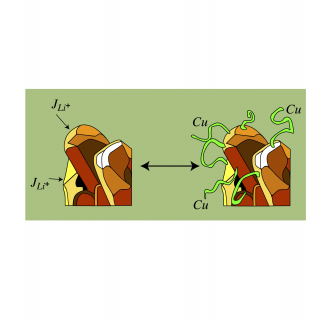
Battery materials: origins of hysteresis and polarization
While most rechargeable batteries rely on intercalation processes, more complex electrochemical reaction mechanisms exist that can dramatically increase the energy density of a battery. These include conversion, displacement and alloying reactions. Unfortunately reaction mechanisms beyond simple intercalation processes often exhibit a large polarization or hysteresis in the voltage profile between charge and discharge cycles, resulting in unacceptable energy losses. One aim of our research seeks to unravel the origins of hysteresis in electrochemical energy storage devices.


